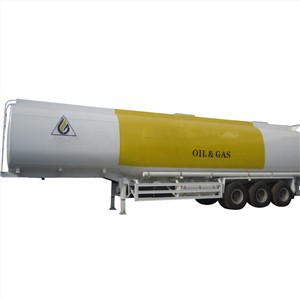Understanding Fire Engine Tanks: A Comprehensive Guide

Introduction
Fire engine tanks play a crucial role in firefighting efforts across the globe. These specialized tanks are designed to store water and other firefighting agents that help extinguish fires quickly and effectively. In this article, we will explore the intricacies of fire engine tanks, their construction, types, and maintenance, ensuring you have a deep understanding of this essential firefighting equipment. Whether you are a firefighter, a fire department manager, or just someone interested in fire safety, this guide covers everything you need to know about fire engine tanks.
What is a Fire Engine Tank?
A fire engine tank, commonly referred to as a water tank, is a storage compartment on a fire engine designed to hold large quantities of water. This water is vital for fighting fires, especially in areas where water source accessibility is limited. Understanding the specifications, types, and importance of fire engine tanks is crucial for efficient firefighting operations.
Importance of Fire Engine Tanks
Fire engine tanks serve several essential functions that directly impact firefighting efficiency:
- Quick Response: Tanks allow firefighters to respond rapidly, providing immediate water supply during emergencies.
- Water Accessibility: They ensure water is available even in remote or urban areas lacking hydrants.
- Support for Larger Operations: Tanks support extensive operations where multiple hoses and equipment are deployed.
Types of Fire Engine Tanks
Fire engine tanks can be categorized based on various factors, including capacity, construction material, and design. Understanding these types is essential for selecting the right tank for specific firefighting needs.
1. Tank Capacity
Fire engine tanks come in different capacities to accommodate varying firefighting scenarios:
- Small Tanks: Typically ranging from 300 to 500 gallons, suited for smaller fires or quick responses.
- Medium Tanks: Between 500 to 1,000 gallons, effectively used for residential or small commercial fires.
- Large Tanks: Exceeding 1,000 gallons, used for significant firefighting efforts where sustained water supply is essential.
2. Construction Materials
The material used in constructing fire engine tanks can significantly affect their durability and maintenance:
- Aluminum: Lightweight, corrosion-resistant, and durable, making it a popular choice.
- Stainless Steel: Highly durable and resistant to corrosion, but heavier and more expensive.
- Polyethylene: Lightweight and resistant to impacts, ideal for smaller vehicles.
3. Design Types
Fire engine tanks come in several designs based on where and how they are mounted:
- Top-Mounted Tanks: Placed on top of the fire truck; allows for additional storage while maintaining a lower center of gravity.
- Side-Mounted Tanks: Integrated into the side of the truck, providing easier access for maintenance and refilling.
- Integrated Tanks: Built directly into the fire apparatus, combining tank and vehicle for increased efficiency.
Key Features of Fire Engine Tanks
Fire engine tanks are equipped with several critical features designed to enhance their functionality and reliability during firefighting operations.
1. Pumping Systems
The pumping system is vital for delivering water from the tank to the hoses. Types of pumps include:
- Positive Displacement Pumps: Ideal for supplying water at low pressures.
- Centrifugal Pumps: Most common in fire engines, suitable for high flow rates.
2. Tank Accessories
Accessories enhance the functionality of fire engine tanks:
- Valves: Control the flow of water and can be automatically or manually operated.
- Fittings: Allows hose connections, essential for quick deployment during firefighting.
- Drainage Systems: Important for emptying the tank post-operation for maintenance and cleaning.
3. Insulation
Insulation in tanks can prevent water from freezing in colder climates, ensuring that the firefighting apparatus is ready for action at all times.
Maintenance of Fire Engine Tanks
Regular maintenance of fire engine tanks is crucial for ensuring they function properly when needed. Here are some essential maintenance tips:
1. Routine Inspections
Fire departments should conduct regular inspections of tanks at least once a month. Inspections should include:
- Checking for leaks and corrosion
- Ensuring all valves and fittings are functional
- Assessing the condition of the insulation (if applicable)

2. Cleaning and Flushing the Tank
Cleaning the tank is vital for preventing contamination. Follow these steps:
- Drain the tank completely.
- Use a high-pressure washer to remove residue.
- Flush the tank with clean water and allow it to dry.
3. Regular Testing of Pump Systems
Pumping systems should be tested periodically to ensure they are reliable. Line up all equipment and run through various flow rates to identify any issues.
Fire Engine Tank Regulations and Standards
It’s vital for fire departments to adhere to regulations and standards set by governing bodies to ensure safety and effectiveness:
1. National Fire Protection Association (NFPA)
The NFPA sets standards for fire protection equipment, including tanks. Compliance with these standards helps ensure safety and efficiency.
2. Local Compliance
Local regulations may mandate specific materials, tank sizes, or construction standards based on the geography and population density of the area served.
Practical Examples of Fire Engine Tank Usage
Understanding real-life scenarios can offer insights into the diverse applications of fire engine tanks. Below are a few examples:
1. Urban Firefighting
In an urban setting, fire engines equipped with large tanks can respond to structure fires where nearby fire hydrants may be insufficient or nonexistent. For example, a high-rise building fire may require multiple tanks to sustain the water supply during extended operations.
2. Rural Firefighting
In rural areas, fire departments often rely on tankers due to a lack of hydrants. Fire engines equipped with large, high-capacity tanks can fill a critical gap, ensuring that rural fires are controlled promptly.
Innovations in Fire Engine Tanks
As technology evolves, so do the designs and materials of fire engine tanks:
1. Smart Tank Technologies
Innovation in smart technologies allows for real-time tracking of water levels and pressure, aiding in efficient management during emergencies.
2. Advanced Materials
Research is ongoing into lighter and more durable materials aimed at improving the efficiency and performance of fire engine tanks.

Frequently Asked Questions (FAQ)
1. How often should fire engine tanks be inspected?
Fire engine tanks should ideally be inspected at least once a month to check for leaks, corrosion, and the functionality of valves and fittings.
2. What is the average capacity of a fire engine tank?
Fire engine tanks typically vary in size, with small tanks ranging from 300-500 gallons, medium tanks between 500-1,000 gallons, and large tanks exceeding 1,000 gallons.
3. Can fire engine tanks be made of plastic?
Yes, some fire engine tanks are made of high-density polyethylene, which is lightweight and resistant to impacts, making it suitable for smaller firefighting vehicles.
4. Why is proper maintenance important for fire engine tanks?
Proper maintenance ensures that fire engine tanks function efficiently and reliably during emergencies, preventing equipment failure and safeguarding firefighting efforts.
5. How do fire engine tanks supply water to hoses?
Fire engine tanks supply water to hoses through a pumping system which enables the quick transfer of water upon activation by firefighters.

6. Are fire engine tanks regulated?
Yes, fire engine tanks are regulated by national and local standards, such as those established by the National Fire Protection Association (NFPA), ensuring safety and efficiency in their use.
